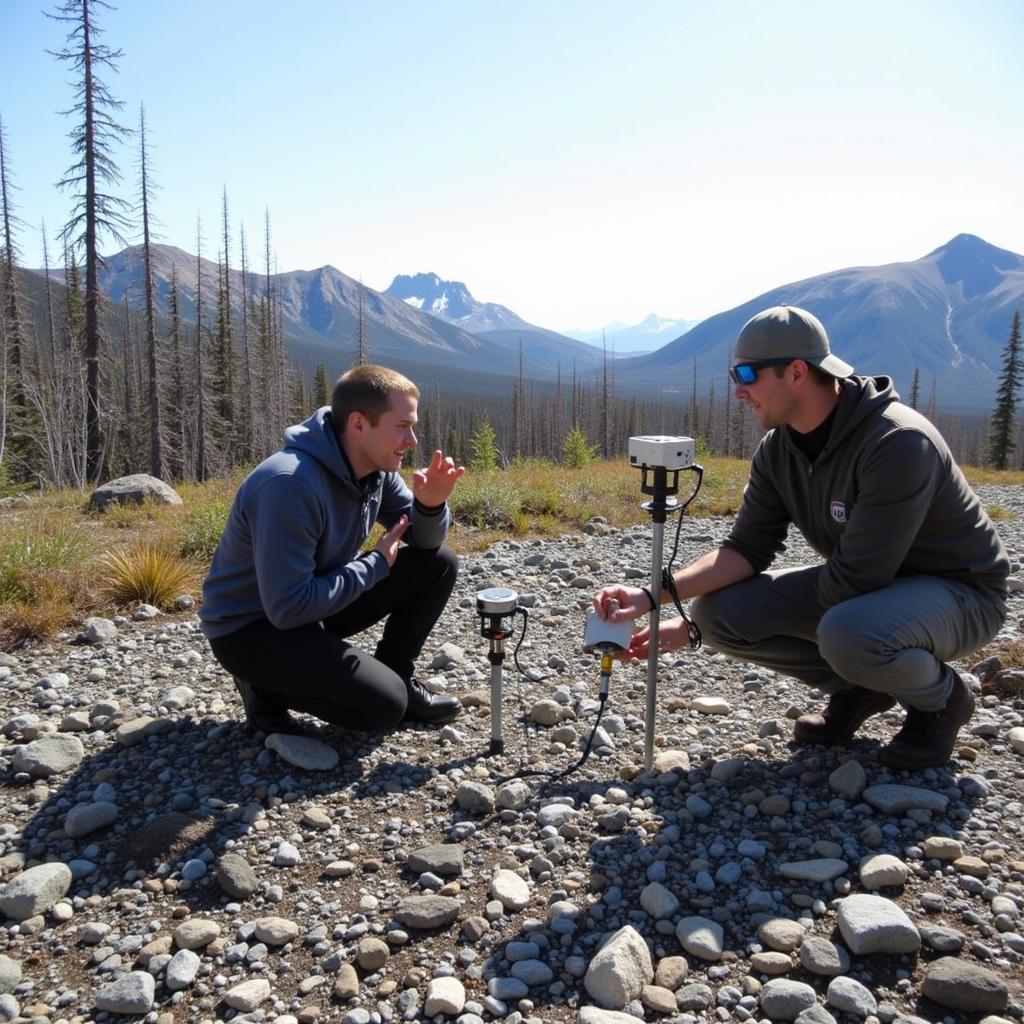The Cold Regions Research And Engineering Laboratory (CRREL) stands as a beacon of scientific inquiry in the frigid landscapes of our world. From the frozen Arctic to the towering Himalayas, CRREL’s research delves into the unique challenges and opportunities presented by cold environments. This article explores the fascinating world of CRREL, its groundbreaking research, and the impact it has on our understanding of our planet.
Delving into CRREL’s Mission and History
CRREL’s mission is to advance our understanding of cold regions through cutting-edge research and engineering. Established in 1961, the laboratory has a rich history of tackling complex problems related to snow, ice, frozen ground, and the infrastructure built upon them. Initially focused on military applications, CRREL’s research now encompasses a broad range of disciplines, including environmental science, geophysics, and civil engineering. The lab’s work has far-reaching implications, from predicting the effects of climate change on permafrost to developing sustainable infrastructure in icy regions.
One of the fascinating areas of CRREL’s research is the study of ice cores. These cylindrical samples, drilled from glaciers and ice sheets, offer a glimpse into Earth’s past climate. By analyzing the trapped air bubbles and isotopic composition of the ice, scientists can reconstruct past temperatures, greenhouse gas concentrations, and even volcanic eruptions. This historical data is crucial for understanding current climate trends and predicting future changes.
 Scientists analyzing ice cores at CRREL
Scientists analyzing ice cores at CRREL
Cold Regions Research and Engineering Laboratory: Addressing the Challenges of a Changing World
The world is changing, and cold regions are experiencing some of the most dramatic shifts. Climate change is accelerating the melting of glaciers and ice sheets, contributing to rising sea levels and altering weather patterns globally. CRREL’s research plays a vital role in monitoring these changes and developing strategies for adaptation and mitigation. From developing innovative engineering solutions for infrastructure in thawing permafrost to studying the impact of melting ice on coastal communities, CRREL is at the forefront of addressing the challenges posed by a warming planet.
What are the primary research areas at CRREL? CRREL’s research spans a multitude of areas, including infrastructure in cold regions, the behavior of snow and ice, the study of permafrost, and the development of remote sensing technologies. These research areas are interconnected and contribute to a holistic understanding of the complex interactions within cold environments.
 Researchers studying permafrost thaw in Alaska
Researchers studying permafrost thaw in Alaska
The Future of Cold Regions Research: CRREL’s Ongoing Contributions
CRREL’s commitment to innovation and scientific excellence ensures its continued relevance in a rapidly changing world. The laboratory is constantly pushing the boundaries of knowledge, developing new technologies and approaches for studying cold environments. From advanced remote sensing techniques to sophisticated computer modeling, CRREL’s research is shaping our understanding of the cryosphere and its impact on the global environment. This ongoing research is essential for informing policy decisions and developing sustainable solutions for the future.
How does CRREL collaborate with other organizations? CRREL actively collaborates with a wide range of partners, including other government agencies, universities, and international organizations. These collaborations leverage diverse expertise and resources, fostering innovation and accelerating scientific discovery.
 CRREL researchers collaborating with international scientists
CRREL researchers collaborating with international scientists
Conclusion: The Cold Regions Research and Engineering Laboratory (CRREL) – A Vital Resource
The Cold Regions Research and Engineering Laboratory (CRREL) provides invaluable insights into the dynamics of cold environments. From understanding the past to predicting the future, CRREL’s research is essential for navigating the challenges and opportunities of a changing world. As we continue to grapple with the impacts of climate change and the complexities of cold regions, CRREL’s work remains a vital resource for scientific discovery and informed decision-making.
FAQ
- What does CRREL stand for? CRREL stands for Cold Regions Research and Engineering Laboratory.
- Where is CRREL located? CRREL is located in Hanover, New Hampshire.
- What type of research does CRREL conduct? CRREL conducts research related to snow, ice, frozen ground, and the infrastructure built upon them.
- How does CRREL contribute to our understanding of climate change? CRREL’s research helps us understand the impacts of climate change on cold regions, including melting glaciers and thawing permafrost.
- Does CRREL collaborate with other organizations? Yes, CRREL collaborates with various government agencies, universities, and international organizations.
- What is the significance of CRREL’s ice core research? CRREL’s ice core research provides valuable data about Earth’s past climate, helping us understand current and future climate trends.
- How can I learn more about CRREL’s research? Visit the CRREL website or contact them directly for more information.
Need support? Contact us 24/7:
Phone: 0904826292
Email: research@gmail.com
Address: No. 31, Alley 142/7, P. Phú Viên, Bồ Đề, Long Biên, Hà Nội, Việt Nam.